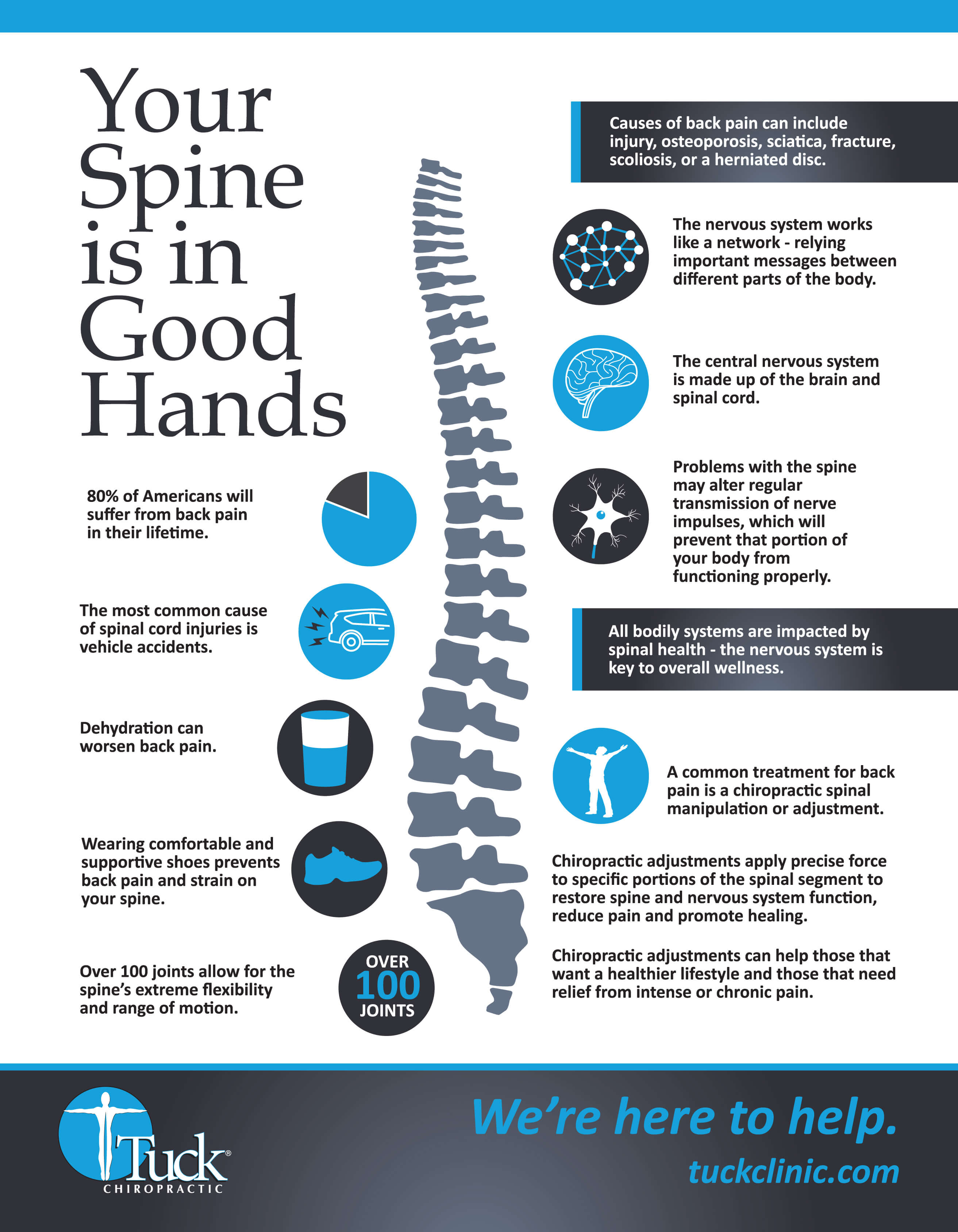The Impact Of Stance On Back Pain: Approaches For Maintaining Correct Positioning During Daily Activities
The Impact Of Stance On Back Pain: Approaches For Maintaining Correct Positioning During Daily Activities
Blog Article
Material Created By-House Ritchie
Preserving correct stance isn't just about sitting up directly; it has to do with aligning your body in a way that sustains your back and reduces the threat of neck and back pain. The method you sit, stand, and relocate throughout the day can significantly impact your back wellness. But how exactly can you guarantee good placement consistently, also throughout busy days full of numerous tasks? Allow's dig deeper right into the refined yet impactful changes you can make to your daily regimen to maintain your back satisfied and healthy and balanced.
Value of Correct Position
Appropriate position is crucial in keeping a healthy and balanced back and stopping pain. When you rest or stand with great stance, your spinal column remains in positioning, reducing pressure on your muscles, tendons, and joints. This placement enables the body to distribute weight uniformly, protecting against excessive anxiety on particular areas that can bring about pain and pain. By maintaining your spinal column correctly lined up, you can also boost your breathing and food digestion, as slouching can compress body organs and limit their functionality.
Moreover, preserving excellent position can boost your overall look and self-confidence. When you stand tall with your shoulders back and head held high, you show self-confidence and appear even more friendly. Great posture can likewise make you really feel more energized and alert, as it promotes correct blood flow and permits your muscle mass to work effectively.
Integrating proper position into your day-to-day regimen, whether resting at a desk, walking, or exercising, is crucial for stopping back pain and advertising overall health. Remember, a little change in how you hold yourself can make a considerable difference in how you really feel and operate throughout the day.
Common Postural Mistakes
When it pertains to keeping excellent posture, several people unknowingly make usual mistakes that can add to neck and back pain and discomfort. One of the most prevalent errors is slumping over or hunching over while resting or standing. This position puts extreme strain on the spinal column and can lead to muscular tissue imbalances and discomfort over time.
https://benefits-of-going-to-chir51739.blogacep.com/36410655/maximizing-your-body-s-all-natural-recovery-capacities-via-chiropractic-treatment is overarching the lower back, which can flatten the all-natural contour of the back and create pain. Furthermore, going across legs while sitting might feel comfy, yet it can develop a discrepancy in the hips and hips, leading to postural problems.
Making use of a cushion that's as well soft or as well firm while resting can also affect your positioning and contribute to neck and back pain. Finally, constantly craning licensed chiropractor near me to consider displays or adjusting your position regularly can strain the neck and shoulders. Being mindful of these usual postural blunders can assist you maintain better placement and minimize the danger of pain in the back.
Tips for Correcting Alignment
To improve your alignment and lower pain in the back, it's important to focus on making small changes throughout your day-to-day regimen. Begin by bearing in mind your pose. When sitting, ensure your feet are flat on the floor, your back is straight, and your shoulders are kicked back. Prevent slouching or leaning to one side. Usage ergonomic chairs or cushions to support your lower back.
When standing, disperse your weight uniformly on both feet, keep your knees slightly bent, and embed your pelvis. Involve your core muscular tissues to support your spine. Take breaks to stretch and walk if you have a less active job. Integrate exercises that strengthen your core and back muscles, such as slabs or bridges.
While sleeping, make use of a pillow that supports the natural contour of your neck to maintain proper spine positioning. Avoid sleeping on your belly, as it can strain your neck and back. By bearing in mind these tips and making small modifications, you can progressively correct your positioning and alleviate pain in the back.
Conclusion
Remember, maintaining excellent position is vital to avoid neck and back pain and promoting back health. By being mindful of your positioning, dispersing weight evenly, and engaging your core muscles, you can reduce stress on your back and decrease the threat of discomfort and injury. Integrate ergonomic support, take normal breaks to extend, and enhance your core and back muscle mass to keep correct alignment throughout the day. Your back will certainly thanks for it!
